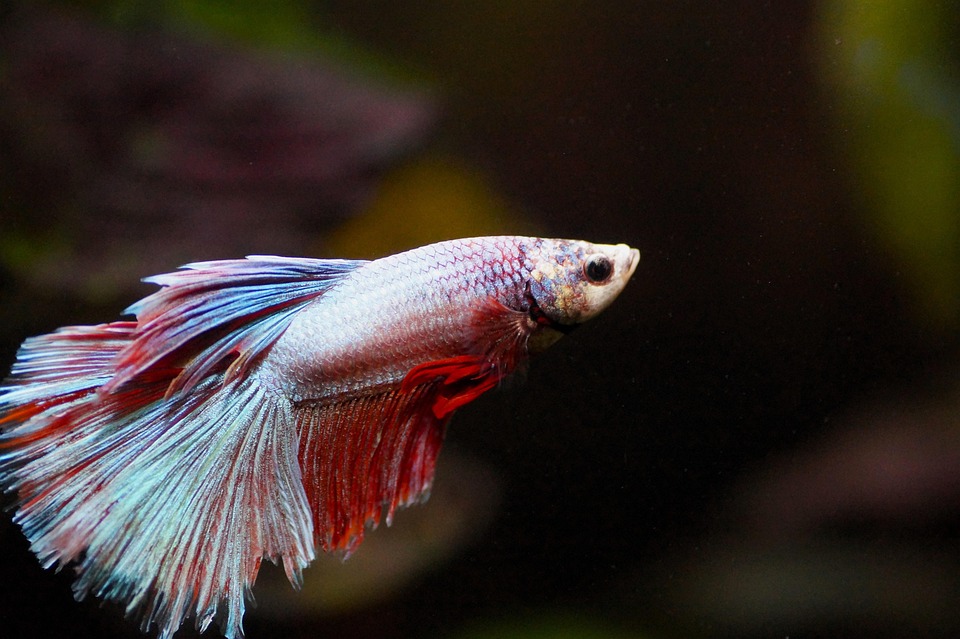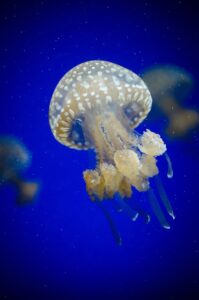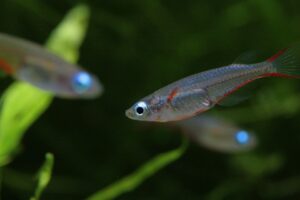
The aquatic world is incredibly diverse, with a myriad of species inhabiting both freshwater and saltwater environments. Understanding the differences between freshwater and saltwater fish is crucial for hobbyists, aquarists, and marine biologists alike. This article delves into the various aspects that distinguish these two types of fish, including their habitats, physiological adaptations, dietary needs, and more.
Habitat Differences
Freshwater Fish Habitats
Freshwater fish are found in environments with low salinity, such as rivers, lakes, ponds, and streams. These habitats are characterized by their constant fluctuation in temperature, pH levels, and water flow. Freshwater fish have adapted to thrive in these conditions, often requiring specific water conditions to survive.
Saltwater Fish Habitats
Saltwater fish inhabit the world’s oceans and seas, where the salinity level is much higher. These environments are vast and diverse, ranging from coral reefs and open oceans to deep-sea habitats. Saltwater fish have evolved to cope with high salinity, stable temperatures, and varying levels of pressure and light, depending on the depth of their habitat.
Physiological Adaptations
Osmoregulation
One of the primary physiological differences between freshwater and saltwater fish is their method of osmoregulation. Freshwater fish must actively retain salts and excrete excess water to maintain their internal balance due to the low salinity of their environment. In contrast, saltwater fish face the opposite challenge: they must excrete excess salts and retain water to prevent dehydration in a high-salinity environment.
Respiratory Adaptations
Both freshwater and saltwater fish have evolved efficient gills that allow them to extract oxygen from water. However, the structure and function of these gills can vary depending on the species and their specific habitat requirements. Some saltwater fish, for example, have gills adapted to filter oxygen from water with higher salinity levels.
Dietary Needs and Feeding Habits
Freshwater Fish Diets
Freshwater fish exhibit a wide range of dietary preferences, from herbivores that feed on aquatic plants and algae to carnivores that prey on smaller fish and invertebrates. Omnivorous freshwater fish consume both plant and animal matter. The availability of food sources in freshwater environments often influences the dietary habits of these fish.
Saltwater Fish Diets
Saltwater fish diets can be equally diverse, with species ranging from strict carnivores to herbivores and omnivores. The abundance of food in marine environments, such as plankton, crustaceans, and smaller fish, often dictates the feeding behavior of saltwater fish. Coral reefs, for example, provide a rich source of food for many saltwater species.
Reproductive Strategies
Freshwater Fish Reproduction
Freshwater fish exhibit a variety of reproductive strategies, including egg-laying (oviparous) and live-bearing (viviparous) species. Many freshwater fish engage in elaborate courtship behaviors and may build nests or protect their young to ensure their survival. The relatively stable environments of freshwater habitats can support these reproductive strategies.
Saltwater Fish Reproduction
Saltwater fish also have diverse reproductive strategies. Some species release thousands of eggs into the water column, relying on sheer numbers to ensure the survival of their offspring. Others, like certain reef fish, may exhibit parental care, guarding eggs or young fish. The vast and often harsh conditions of the ocean necessitate these varied approaches to reproduction.
Behavioral Differences
Freshwater Fish Behavior
Freshwater fish often display territorial behavior, particularly in species that inhabit confined spaces such as smaller rivers or lakes. Many freshwater fish are also known for their schooling behavior, which provides protection from predators and enhances foraging efficiency. Additionally, some species demonstrate complex social structures and communication methods.
Saltwater Fish Behavior
Saltwater fish exhibit a wide range of behaviors, from solitary hunters to highly social schooling species. The open ocean and coral reef environments allow for complex interactions among species, including symbiotic relationships and cooperative hunting. Many saltwater fish are also known for their migratory patterns, traveling vast distances to breed or feed.
Adaptations to Environmental Challenges
Freshwater Fish Adaptations
Freshwater fish have evolved various adaptations to cope with environmental challenges such as changes in water temperature, pH, and oxygen levels. These adaptations may include the development of specialized gills or skin structures that assist in oxygen uptake, as well as behavioral adaptations like burrowing or migrating to more favorable conditions.
Saltwater Fish Adaptations
Saltwater fish have evolved to survive in the challenging conditions of the ocean, such as high salinity, pressure, and variable light levels. Many species possess unique adaptations like bioluminescence for communication and camouflage, or specialized body shapes that aid in efficient swimming and predation.
Impact of Human Activity
Freshwater Fish and Human Impact
Human activities, such as pollution, habitat destruction, and overfishing, have significant impacts on freshwater ecosystems. Many freshwater fish species are threatened by these activities, leading to declines in biodiversity and disruptions to the ecological balance of their habitats.
Saltwater Fish and Human Impact
Saltwater fish are also affected by human activities, including overfishing, pollution, and climate change. The destruction of coral reefs and other critical habitats poses a severe threat to the survival of many saltwater species. Conservation efforts are crucial to mitigating these impacts and preserving marine biodiversity.
Conclusion
Understanding the key differences between freshwater and saltwater fish is essential for appreciating the complexity and diversity of aquatic life. These differences are shaped by the distinct environments in which these fish live, driving their unique adaptations, behaviors, and ecological roles. By recognizing and respecting these differences, we can better protect and conserve the precious aquatic ecosystems on our planet.
#ChatGPT assisted in the creation of this article.








